Embryo model completes gastrulation to neurulation and organogenesis
- PMID: 36007540
- PMCID: PMC9534772
- DOI: 10.1038/s41586-022-05246-3
Embryo model completes gastrulation to neurulation and organogenesis
Abstract
Embryonic stem (ES) cells can undergo many aspects of mammalian embryogenesis in vitro1-5, but their developmental potential is substantially extended by interactions with extraembryonic stem cells, including trophoblast stem (TS) cells, extraembryonic endoderm stem (XEN) cells and inducible XEN (iXEN) cells6-11. Here we assembled stem cell-derived embryos in vitro from mouse ES cells, TS cells and iXEN cells and showed that they recapitulate the development of whole natural mouse embryo in utero up to day 8.5 post-fertilization. Our embryo model displays headfolds with defined forebrain and midbrain regions and develops a beating heart-like structure, a trunk comprising a neural tube and somites, a tail bud containing neuromesodermal progenitors, a gut tube, and primordial germ cells. This complete embryo model develops within an extraembryonic yolk sac that initiates blood island development. Notably, we demonstrate that the neurulating embryo model assembled from Pax6-knockout ES cells aggregated with wild-type TS cells and iXEN cells recapitulates the ventral domain expansion of the neural tube that occurs in natural, ubiquitous Pax6-knockout embryos. Thus, these complete embryoids are a powerful in vitro model for dissecting the roles of diverse cell lineages and genes in development. Our results demonstrate the self-organization ability of ES cells and two types of extraembryonic stem cells to reconstitute mammalian development through and beyond gastrulation to neurulation and early organogenesis.
© 2022. The Author(s).
Conflict of interest statement
J.H.H. is a founder and chief scientific advisor to RenewalBio Ltd. M.Z.-G., G.A. and C.E.H. are applicants and inventors on a patent filed jointly on 5 May 2022 by Caltech and the University of Cambridge pertaining to and covering ‘
Figures






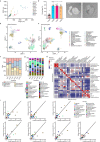
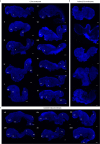
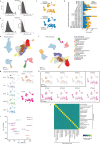
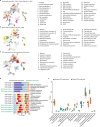

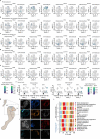
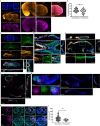
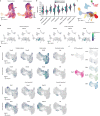
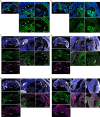
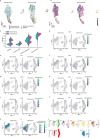

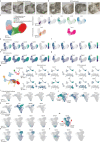
Comment in
-
Mouse embryos grown without eggs or sperm: why, and what's next?Nature. 2022 Sep;609(7926):230-231. doi: 10.1038/d41586-022-02334-2. Nature. 2022. PMID: 36008716 No abstract available.
-
Mouse embryo models built from stem cells take shape in a dish.Nature. 2022 Oct;610(7930):39-40. doi: 10.1038/d41586-022-03075-y. Nature. 2022. PMID: 36192499 Free PMC article.
Similar articles
-
Mouse embryo model derived exclusively from embryonic stem cells undergoes neurulation and heart development.Cell Stem Cell. 2022 Oct 6;29(10):1445-1458.e8. doi: 10.1016/j.stem.2022.08.013. Epub 2022 Sep 8. Cell Stem Cell. 2022. PMID: 36084657 Free PMC article.
-
Assembly of complete mouse embryo models from embryonic and induced stem cell types in vitro.Nat Protoc. 2023 Dec;18(12):3662-3689. doi: 10.1038/s41596-023-00891-y. Epub 2023 Oct 11. Nat Protoc. 2023. PMID: 37821625 Free PMC article. Review.
-
Modeling post-implantation stages of human development into early organogenesis with stem-cell-derived peri-gastruloids.Cell. 2023 Aug 31;186(18):3776-3792.e16. doi: 10.1016/j.cell.2023.07.018. Epub 2023 Jul 20. Cell. 2023. PMID: 37478861
-
Generation of Stem Cell-Based Mouse Embryo-Like Structures.Methods Mol Biol. 2024;2767:123-134. doi: 10.1007/7651_2023_493. Methods Mol Biol. 2024. PMID: 37284940 Free PMC article.
-
Differentiation of definitive endoderm from mouse embryonic stem cells.Results Probl Cell Differ. 2012;55:303-19. doi: 10.1007/978-3-642-30406-4_17. Results Probl Cell Differ. 2012. PMID: 22918814 Review.
Cited by
-
The logic of monsters: development and morphological diversity in stem-cell-based embryo models.Interface Focus. 2024 Oct 25;14(5):20240023. doi: 10.1098/rsfs.2024.0023. eCollection 2024 Oct 11. Interface Focus. 2024. PMID: 39464644 Free PMC article. Review.
-
Recording morphogen signals reveals mechanisms underlying gastruloid symmetry breaking.Nat Cell Biol. 2024 Oct 2. doi: 10.1038/s41556-024-01521-9. Online ahead of print. Nat Cell Biol. 2024. PMID: 39358450
-
Temporal BMP4 effects on mouse embryonic and extraembryonic development.Nature. 2024 Oct;634(8034):652-661. doi: 10.1038/s41586-024-07937-5. Epub 2024 Sep 18. Nature. 2024. PMID: 39294373 Free PMC article.
-
Assembly of a stem cell-derived human postimplantation embryo model.Nat Protoc. 2024 Sep 11. doi: 10.1038/s41596-024-01042-7. Online ahead of print. Nat Protoc. 2024. PMID: 39261744 Review.
-
PHD2 safeguards modest mesendoderm development.Commun Biol. 2024 Sep 7;7(1):1100. doi: 10.1038/s42003-024-06824-z. Commun Biol. 2024. PMID: 39244636 Free PMC article.
References
Publication types
MeSH terms
Substances
Grants and funding
LinkOut - more resources
Full Text Sources
Other Literature Sources
Molecular Biology Databases

